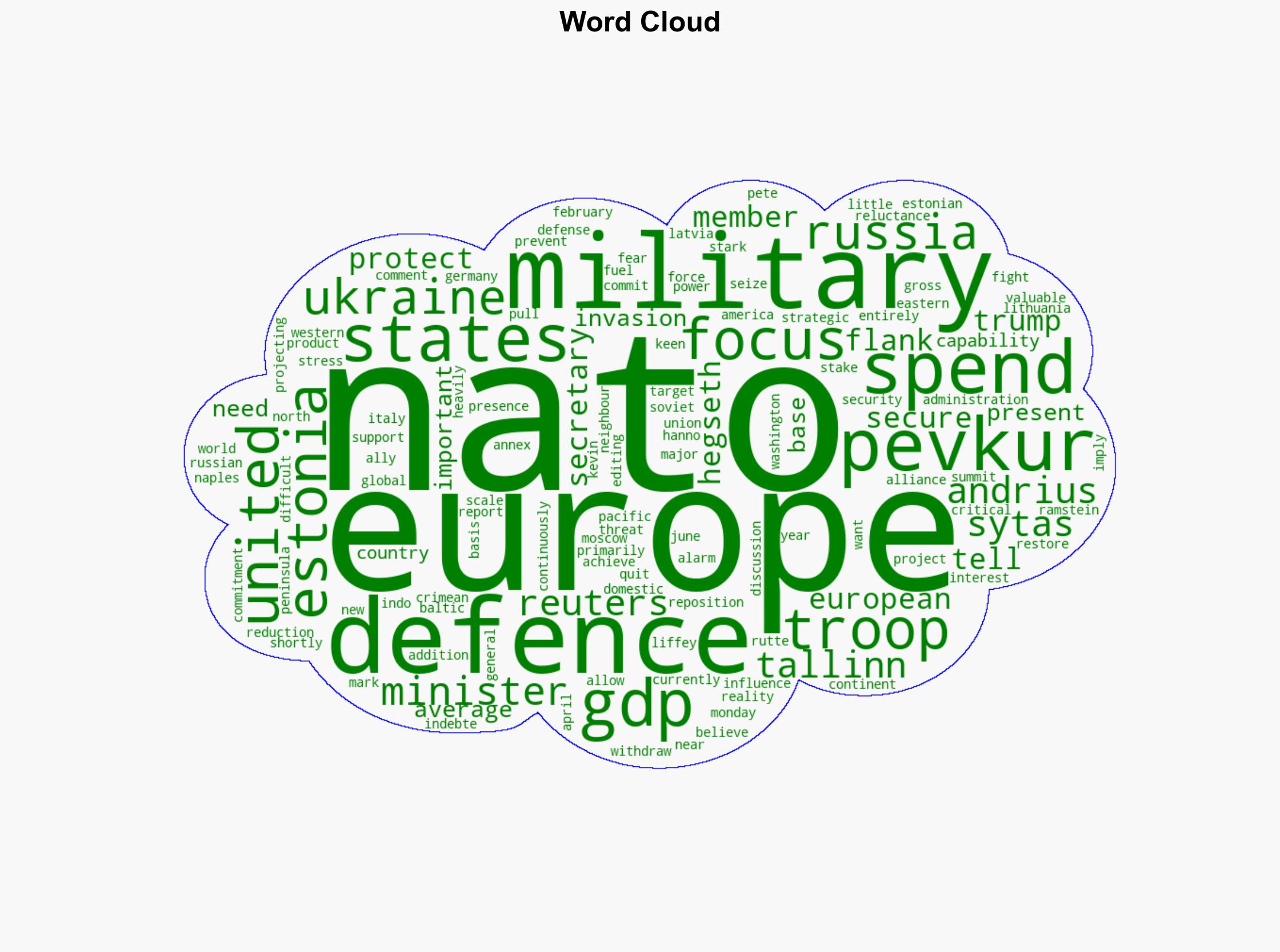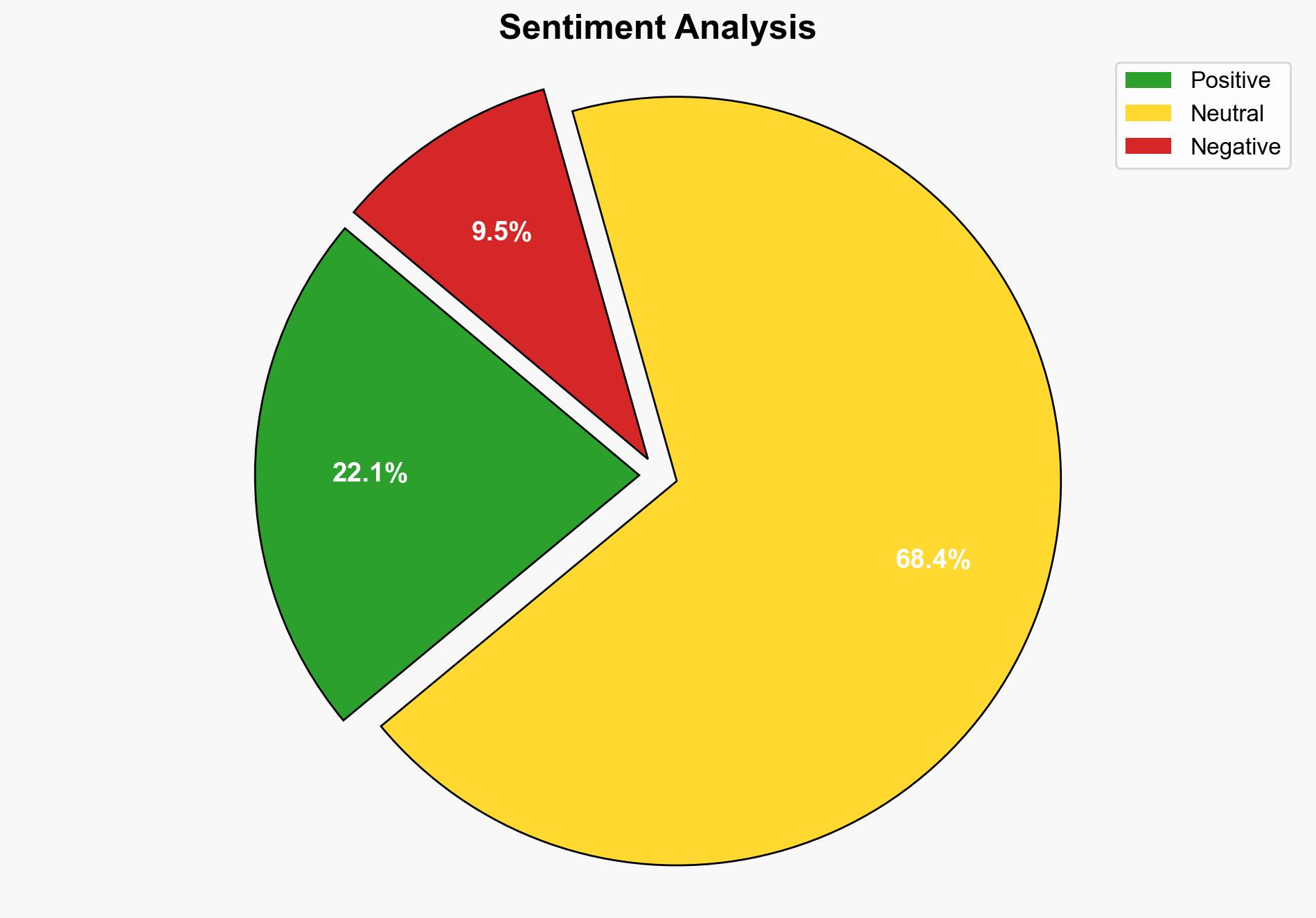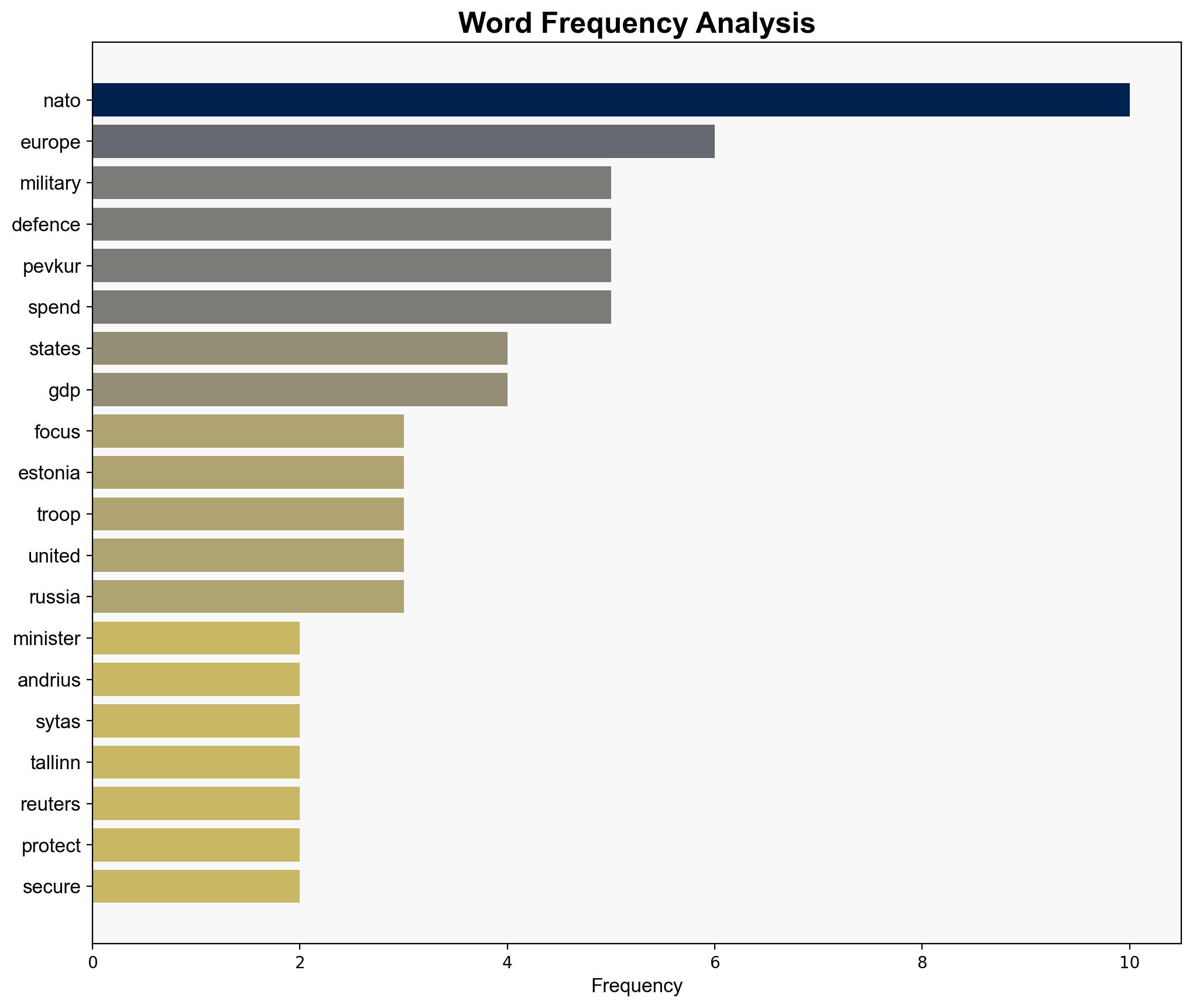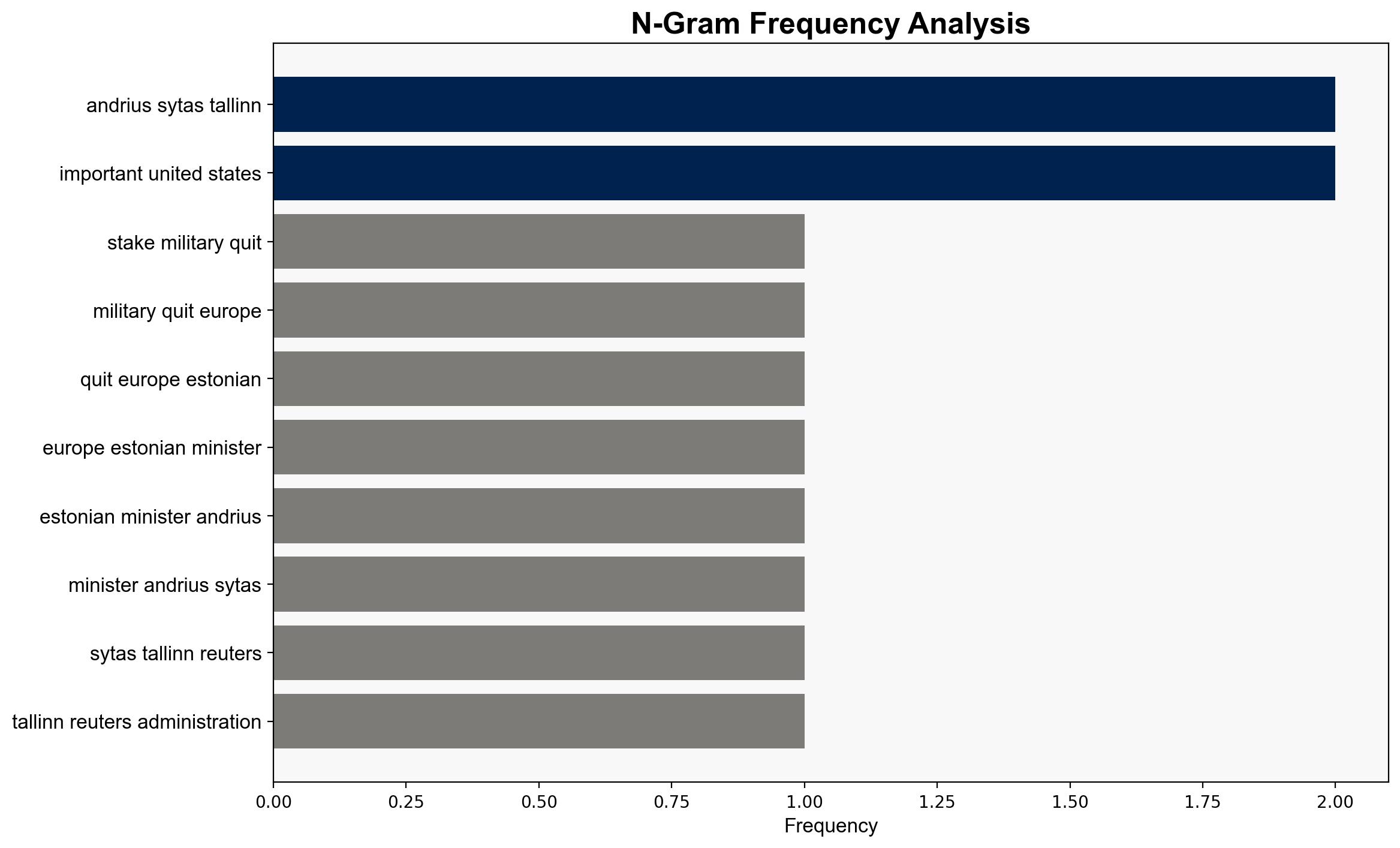Too much at stake for US military to quit Europe Estonian minister says – Yahoo Entertainment
Published on: 2025-04-29
Intelligence Report: Too much at stake for US military to quit Europe Estonian minister says – Yahoo Entertainment
1. BLUF (Bottom Line Up Front)
The Estonian defense minister emphasizes the strategic importance of maintaining a robust U.S. military presence in Europe. The withdrawal could weaken NATO’s eastern flank, reducing deterrence against Russian aggression. The report recommends sustaining current troop levels to secure regional stability and uphold NATO commitments.
2. Detailed Analysis
The following structured analytic techniques have been applied to ensure methodological consistency:
SWOT Analysis
Strengths: Established NATO alliances, strategic military bases in Italy and Germany.
Weaknesses: Potential over-reliance on U.S. military support, limited defense spending by some European allies.
Opportunities: Strengthening NATO’s eastern defenses, enhancing military capabilities through increased European defense spending.
Threats: Russian military aggression, potential U.S. military withdrawal, geopolitical instability.
Cross-Impact Matrix
The interdependence between U.S. military presence and European security is critical. A reduction in U.S. forces could embolden Russian actions, destabilizing the region and prompting increased defense spending by European nations.
Scenario Generation
Best Case: NATO allies increase defense spending, reinforcing the eastern flank and deterring Russian aggression.
Worst Case: U.S. withdrawal leads to a security vacuum, escalating regional tensions and potential conflicts.
Most Likely: Continued U.S. presence with gradual European defense enhancements, maintaining a balanced deterrence posture.
3. Implications and Strategic Risks
The potential U.S. military withdrawal poses significant risks to NATO’s deterrence capabilities. This could lead to increased Russian influence and destabilization in Eastern Europe. Economic and political pressures may also arise as European nations adjust to new security dynamics.
4. Recommendations and Outlook
- Maintain current U.S. troop levels in Europe to ensure regional stability and deter Russian aggression.
- Encourage NATO allies to meet defense spending targets, enhancing collective security.
- Monitor geopolitical developments closely to adapt strategies and maintain a robust deterrence posture.
5. Key Individuals and Entities
Hanno Pevkur, Andrius Sytas, Pete Hegseth, Mark Rutte
6. Thematic Tags
(‘national security threats, regional focus, NATO, military strategy’)




